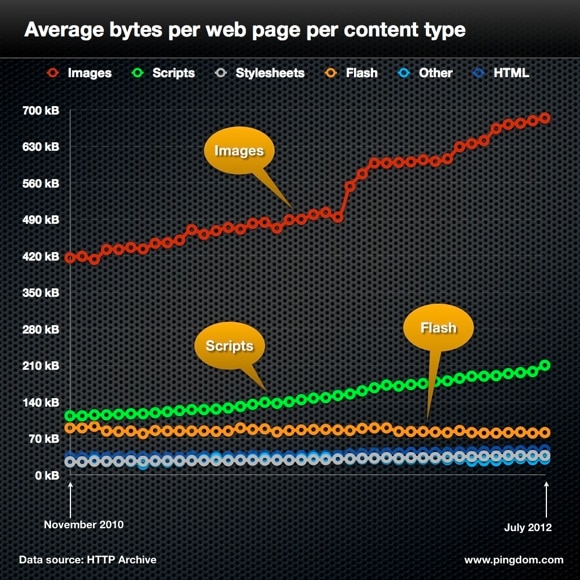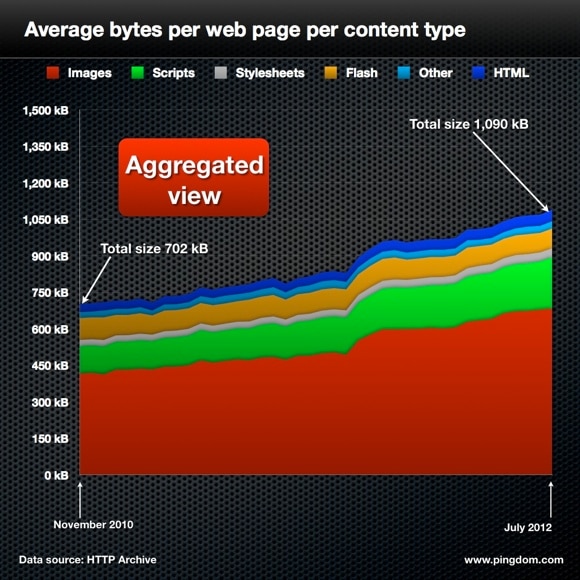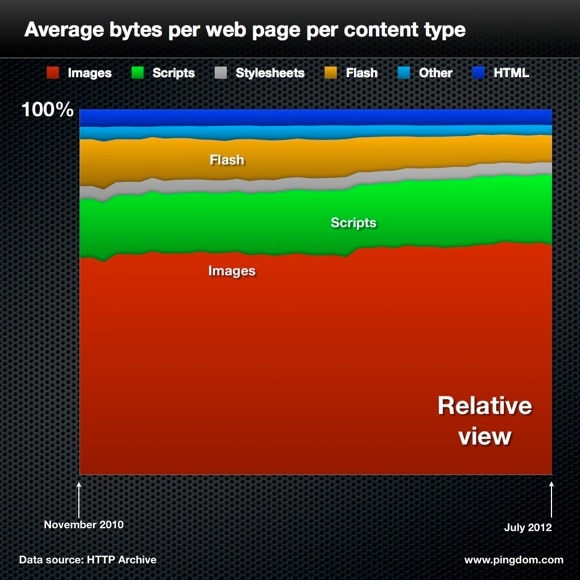
We know that webpages on average are getting bigger, and that Adobe Flash is slowly fading away. But even if we tell you that the average web page has since 2010, grown from 702 kB to 1,090 kB, wouldn’t it be even better to visualize it?
Of course it would! So, with the help of data from the HTTP Archive, that’s exactly what we’ve done.
Web pages are getting bigger
First, let’s look at how the individual components of web pages tracked by the HTTP Archive have developed since November 2010. We can see that images have taken off quite dramatically in size, as have scripts. There appears to be a noticeable decline in the size of Flash files. When it comes to HTML, stylesheets and the rest, there doesn’t seem to have been much change.

If we instead aggregate the data, basically stack each type of content on top of one another, we get a much better sense of how much bigger the average web page is today.

But relative size has changed very little
If everything except Flash is growing, what is growing the most? Measured in kilobytes, as you can see above, it’s clear that images are getting larger in combined size as are scripts.
But what if we instead look at what percentage out of the average web page is HTML, stylesheets, images, etc?

In this view, where 100% represents the total size of a web page, we can see that scripts and images increase some in relative size, and that stylesheets, as well as HTML, has lost out a bit in relative terms. The biggest change, however, is Flash, which has seen its share of the typical web page almost cut in half.
For each type of content, here is the change from November 2010 to July 2012:
- Images: from 59% to 63%
- Scripts: from 16% to 19%
- Stylesheets: from 4% to 3%
- Flash: from 13% to 7% (in absolute terms, Flash has “only” been reduced from 90 kB to 81 kB)
- Other: unchanged at 3%
- HTML: from 5% to 4%
What will it look like in another two years?
From this quick comparison, it’s clear that images and scripts take up, relatively speaking, a larger portion of the complete size of websites today, and Flash is slowly disappearing. And when you put Flash against the seemingly ever-increasing size of web pages, Flash is losing out even more.
We will certainly keep an eye on how this develops. If we do a follow-up study in 2014, what do you think will be the main changes? Surely, Flash is still around, but how small
Image (top) via Shutterstock.
























